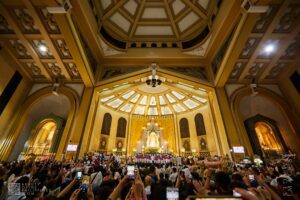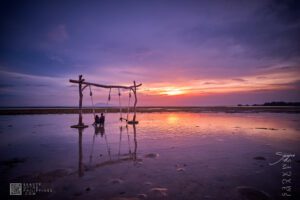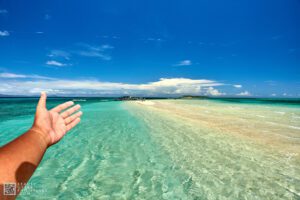Menu
THE BEAUTY OF
Luzon
Zamboanga, Zamboanga Peninsula
THE BEAUTY OF
Luzon
- Philippines
Luzon is the largest and most populous island in the Philippines. It is ranked 15th largest in the world by land area. Located in the northern portion of the archipelago, it is the economic and political center of the nation, being home to the country’s capital city, Manila, as well as Quezon City, the country’s most populous city. With a population of 53 million as of 2015, it is the fourth most populous island in the world, containing 52.5% of the country’s total population.
Luzon may also refer to one of the three primary island groups in the country. As such, it includes the Luzon mainland, the Batanes and Babuyan groups of islands to the north, Polillo Islands to the east, and the outlying islands of Catanduanes, Marinduque and Mindoro, among others, to the south.. The islands of Masbate, Palawan and Romblon are also included as well, though these three are sometimes grouped in the Visayas.
Loading...


Hondagua: From Sunset Seawalls to Historical Charms
Hondagua is a picturesque coastal barangay in the municipality of Lopez, located within the province of Quezon, Philippines. Situated along the shores of Lamon Bay, Hondagua is celebrated for its scenic beauty, characterized by lush coconut plantations that stretch towards the sea and a tranquil way of life that reflects the simplicity of rural living.


Pabasa ng Pasyon: A Heartfelt Holy Week in General Luna, Quezon with the Living Tradition of Buhay na Kubol
If you’ve ever wondered what faith looks like when it’s woven into the daily life of a town, you might want to head to General Luna, Quezon during Holy Week. Tucked away in the Bondoc Peninsula, this quiet yet spirited town comes alive each year with one of the Philippines’ most heartfelt Lenten traditions—the Pabasa ng Pasyon.


La Naval de Manila: A Celebration of Faith and Heritage
Every October, the vibrant streets of Quezon City come alive with faith, devotion, and rich cultural traditions during the Feast of La Naval de Manila. Held at the majestic Santo Domingo Church, this annual event is a must-experience celebration that blends religious fervor with Filipino heritage, making it a prime attraction for both locals and tourists alike.


Manila Golden Mosque: A Cultural and Historical Landmark
Situated in the heart of Quiapo, Manila, the Manila Golden Mosque stands as a magnificent testament to the rich cultural and religious diversity of the Philippines. With its gleaming golden dome, the mosque is not just an architectural wonder but also a place of profound spiritual and historical significance. For both locals and tourists, it offers a unique glimpse into the vibrant Islamic heritage that thrives in the nation.


Tagaytay City: A Breathtaking Escape in the South
Nestled in the province of Cavite, Tagaytay City is one of the most sought-after destinations in the Philippines. Just a short drive from Metro Manila, this charming city is known for its cool climate, stunning landscapes, and breathtaking views of Taal Volcano and Taal Lake. Whether you’re looking for a peaceful retreat, an adventure-filled trip, or a culinary experience, Tagaytay offers something for every traveler.


Casa Manila: Unveiling Spanish-Filipino Heritage Through Historical Charm
Casa Manila, located in the heart of Intramuros, Manila, is a living museum that transports visitors to the grandeur of the Spanish colonial era. As one of the key attractions in the historic walled city, Casa Manila offers an immersive experience into the lifestyle of affluent Filipinos, known as ilustrados, during the 19th century.


Baguio Cathedral: A Must-Visit Landmark in Baguio City
Nestled in the heart of Baguio City, the Our Lady of Atonement Cathedral—more popularly known as Baguio Cathedral—stands as a masterpiece of neo-Romanesque architecture and a symbol of resilience and devotion. With its striking rose-colored facade, twin spires, and intricate stained-glass windows, the cathedral is not only a place of worship but also a historical and cultural treasure that captivates visitors from near and far.


Pundaquit and San Miguel: Coastal Gems of San Antonio, Zambales
Pundakit, or the Municipality of Pundaquit of San Antonio, in Zambales Province, is a fishing village that boasts a multilingual local population (Ilocano, Zambal, Tagalog) and is increasingly known as the place to go to enjoy the beach, mountains, and picturesque coves of the town.


Iloilo Customs House: A Historic Neoclassical Landmark and Maritime Museum
The Iloilo Customs House, also known as Aduana de Iloílo in Spanish, is a historic building in Iloilo City constructed in 1916 during the American colonial period in the Philippines. Originally referred to as the Iloilo Customhouse, it was built with an initial appropriation of ₱200,000, plus an additional ₱33,000 in 1917. It is the second customs house built by the Americans, following the Cebu Customs House (now Malacañang sa Sugbo), completed in 1910. The planning for the new customs house at the port of Iloilo began in 1913 under the supervision of William E. Parsons, the Consulting Architect at that time. Parsons initially oversaw the project, intending to replace the older Spanish-era customs house situated near the river.


Gabriela Silang Memorial Shrine: The Ilocano Joan of Arc
The Gabriela Silang Memorial Shrine, located in Sitio Pideg, Magsaysay, Santa, Ilocos Sur, is a poignant tribute to one of the Philippines’ most celebrated heroines. Situated in her birthplace, this shrine honors Gabriela Silang’s bravery and leadership in resisting Spanish colonial rule. The centerpiece of the memorial is a dramatic statue of Gabriela on horseback, brandishing a bolo, symbolizing her resolute spirit and warrior ethos.


Callao Cave: Unraveling Ancient History and Natural Wonders in the Philippines
In addition to being known as the “Seven Chamber Show Cave” in the province of Cagayan, the Callao Cave is also one of the limestone caves located in the western foothills of the Northern Sierra Madre Mountains and is


Subic Lighthouse: A Beacon of Maritime Heritage
In the past, the Olongapo’s Subic Lighthouse, also known as the Subic Old Light Parola, served as a guiding light for ships, predating the establishment of the famous Lighthouse Marina Resort. Located near Gordon Park in Subic Bay, Zambales, this historic site graces Kalaklan Point.


The National Museum of Anthropology: A Journey Through Philippine Culture
The National Museum of Anthropology, located in the heart of Manila within the National Museum Complex, is a must-visit destination for travelers eager to explore the rich and diverse heritage of the Philippines. This remarkable museum showcases artifacts, textiles, and archaeological treasures that provide a deeper understanding of the country’s history and indigenous cultures. Housed in a grand neoclassical building that once served as the Department of Finance, it stands as a testament to the nation’s commitment to preserving its past for future generations.


Lamon Bay: A Hidden Gem for Eco-Tourism and Marine Adventures
Located along the northeastern coast of Luzon, Philippines, Lamon Bay is a stunning destination that boasts pristine waters, rich marine life, and a vibrant local culture. Bordered by the provinces of Quezon and Camarines Norte, this breathtaking bay offers travelers an escape into nature’s wonders while experiencing the deep-rooted history of the region.


Guadalupe Church Ruins: A Glimpse into Makati’s Rich History
Tucked away in the bustling heart of Makati lies the Guadalupe Church Ruins, an evocative landmark that offers more than just a glimpse of the past—it invites you to step into the story of the country’s colonial history and witness the enduring beauty of architectural resilience. Though much of the original structure is now in ruins, the church’s remaining elements are a powerful testament to the area’s deep religious and cultural roots, making it an essential stop for any curious traveler looking to uncover the layers of history beneath the modern cityscape.


Balitok Ti Alicia Festival: A Glimpse into Alicia’s Golden Age Celebration
As “Balitok” is defined as gold in Ilocano language, this was the inspiration for the festival “Balitok Ti Alicia”, that is being held to commemorate the golden age of Alicia, Isabela. In recognition of the town’s reputation as one of the province’s biggest producers of palay, the Balitok ti Alicia Festival celebrates rice as one of the golden grains that helped make Angadanan Viejo, now Alicia, into one of the region’s leading business hubs.


Dinagyang Festival: A Faithful Fusion of Music, Colors, Culture, and Spiritual Celebration in Iloilo City
Are you ready to experience some of the most unique and vivid festivities in the Philippines – Dinagyang Festival? This vibrant celebration is one of the largest and most celebrated festivals in the country and is dedicated to the devotion to the Holy Child, more commonly known as Sr. Sto Niño. Held every fourth Sunday of the year, it commemorates the legendary barter of Panay Island between its native inhabitants and Malay settlers.


Santa Ana de Taguig Church: A Living Chronicle of Faith and Heritage
Located in the heart of Taguig City, just a short distance from the bustling Bonifacio Global City (BGC), lies the St. Anne Parish Church, more popularly known as Taguig Church. With its rich history, stunning architecture, and deep cultural significance, this centuries-old church has become a must-visit for anyone exploring the dynamic city of Taguig. Whether you’re a history enthusiast, a devout traveler, or simply someone in search of a peaceful spot, Taguig Church offers a glimpse into the past while serving as a sanctuary in the present.


Ninoy Aquino Parks and Wildlife Center: A Green Oasis in Quezon City
Situated in the heart of Quezon


Binondo Chinatown: A Culinary and Cultural Adventure in the Oldest Chinatown
In addition to being considered the oldest Chinatown in the world, Binondo Chinatown is also the center of trade and commerce in Manila City. In actuality, it is actually a district within Binondo District, commonly referred to


Plaza San Lorenzo Ruiz: The Heart of Binondo, Manila
Nestled in the vibrant district of Binondo, Manila, Plaza San Lorenzo Ruiz stands as a historical and cultural gem. Once known as Plaza Calderón de la Barca, this public square is a testament to the city’s rich colonial past and its deep-rooted Chinese-Filipino heritage. Fronting the iconic Binondo Church, the plaza serves as both a landmark and a gathering space for locals and tourists alike.


Sigpawan Festival: Lemery’s Vibrant Easter Celebration of Bounty and Culture
Each year, the Sigpawan Festival, which is held in Lemery, Batangas, takes place on Easter Sunday. The highlight of the festival is the Fluvial procession along the town’s coastal lines. This festival aims to showcase the rich


Taal Volcano Protected Landscape: A Wild Beauty Just a Breath Away from Manila
Let’s be real—when you think of volcanoes, you probably imagine something massive and far-flung, right? But here in the Philippines, just 50-ish kilometers from Metro Manila, sits a natural wonder that’s as fiery as it is fascinating: Taal Volcano. It’s the kind of place that flips the script on what you thought a volcano should be—compact but chaotic, scenic yet unpredictable.


CaSoBe: Discover Calatagan’s Best-Kept Coastal Gem
You know that feeling when you just want to escape the city buzz and dive straight into a chill beach vibe? Well, Calatagan South Beach, or CaSoBē as the locals call it, might just be your new favorite go-to spot in Batangas. Located roughly two to three hours from Manila, this 15-hectare beachside paradise is not your typical crowded shore—it’s a carefully crafted blend of luxury, adventure, and laid-back island life.
Luzon
BROWSE BY CATEGORIES
ARCHITECTURE
HERITAGE
CHURCH
FAITH
NATURAL ATTRACTIONS
ADVENTURE
FESTIVALS
EVENTS
please share and comment
Facebook
Twitter
LinkedIn
Pinterest
All photographs that appear on the site are copyright of Mariano Sayno. ©2017 Mariano Sayno.

















